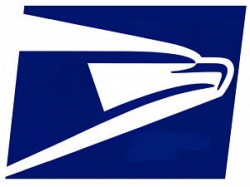 The big question: Is the billion-dollar investment the USPS made into its Flats Sequencing System paying off?
The big question: Is the billion-dollar investment the USPS made into its Flats Sequencing System paying off?
The unsatisfying answer: They don’t know.
As D. Eadward Tree explains in a recent post on Dead Tree Edition, “postal management doesn’t know whether the 10-year-old FSS is saving money or work hours.”
Tree cites last week’s report from the USPS Office of the Inspector General that showed daily volumes were far below goal, and the average runtime goals were off target by around 27%. Tree pulls some salient findings out of the report that demonstrate the investment is just not paying off as expected.
“Sorting catalogs, magazines and other flat mail on FSS machines costs 6 cents per piece, versus 2 cents for the older Automated Flats Sorting Machines,” Tree writes.
Quoting the report, he notes that “[i]n theory, the USPS could be making that up in improved efficiency at the delivery units, but ‘the Postal Service does not have any current information about carrier work-hour savings related to FSS processing.’”
Regarding one of the program’s biggest problems – flat mail that should be sorted on the massive FSS machines but isn’t – Tree notes that “in-depth study of five Atlantic Coast FSS facilities found an average ‘leakage’ rate of 23%. (Dead Tree Edition’s opinion is that such a high leakage rate makes it virtually impossible for the FSS to achieve net savings.)”
For their part, USPS management blames the leaks on the mailers themselves for missing daily FSS processing deadlines; late mail has to be sorting the old way, with automated flat sorting machines (AFSMs) or manually – costing more and taking more time in the process.
“Each FSS facility processes flat mail in a predetermined order, it explained, so when a shipment arrives for ZIP codes that have already been sorted, the mail is diverted to other sorting processes,” Tree notes.
He’s not buying it, saying: “(But do the people scheduling the deliveries know which ones are consistently problematic, so that they can adjust the schedules? And here’s a radical thought: Instead of considering a delivery one hour late for today’s processing, why not consider it 23 hours early – for tomorrow’s processing? That way, it can be run on the FSS, as intended.)”
Indeed, when it comes to logic like this, it’s hard to argue with Tree. Yet the USPS never fails to surprise us. And they’ve had several years to get this sorted out; the FSS system was falling flat back in 2014, with leakage as high as 33% and damaged mail on the material that did go through the FSS. The bright spot, according to Tree, is that the machines do rate a good throughput when utilized, exceeding their hourly goal by 1%. But with the underutilization, any potential savings are eliminated.
“No matter how well the 77% of non-leakage mail is handled by the FSS machines, it can’t make up for the huge incremental costs of sorting the 23% of FSS mail that is diverted to other sorting methods,” Tree concludes. “The Postal Service’s strategy for the FSS has been to ignore the problems while trying to pass along the costs to customers in the form of emergency rate hikes.”
A billion dollar boondoggle, or a true investment in the industry’s future? Without some serious awakenings at the management level, it’s becoming pretty clear where this one falls.

June 16, 2020, 9:12 am